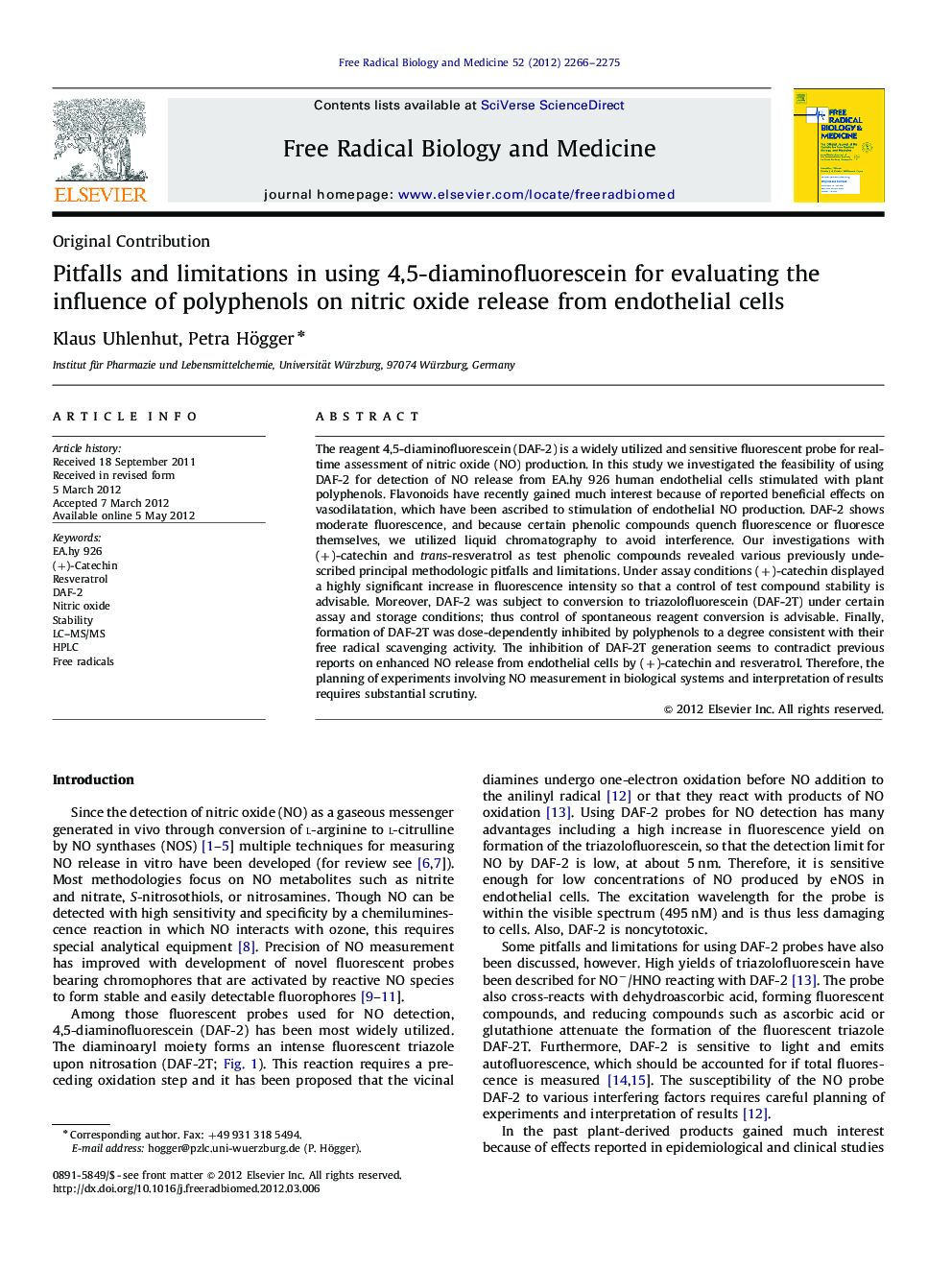| Article ID | Journal | Published Year | Pages | File Type |
|---|---|---|---|---|
| 1908825 | Free Radical Biology and Medicine | 2012 | 10 Pages |
The reagent 4,5-diaminofluorescein (DAF-2) is a widely utilized and sensitive fluorescent probe for real-time assessment of nitric oxide (NO) production. In this study we investigated the feasibility of using DAF-2 for detection of NO release from EA.hy 926 human endothelial cells stimulated with plant polyphenols. Flavonoids have recently gained much interest because of reported beneficial effects on vasodilatation, which have been ascribed to stimulation of endothelial NO production. DAF-2 shows moderate fluorescence, and because certain phenolic compounds quench fluorescence or fluoresce themselves, we utilized liquid chromatography to avoid interference. Our investigations with (+)-catechin and trans-resveratrol as test phenolic compounds revealed various previously undescribed principal methodologic pitfalls and limitations. Under assay conditions (+)-catechin displayed a highly significant increase in fluorescence intensity so that a control of test compound stability is advisable. Moreover, DAF-2 was subject to conversion to triazolofluorescein (DAF-2T) under certain assay and storage conditions; thus control of spontaneous reagent conversion is advisable. Finally, formation of DAF-2T was dose-dependently inhibited by polyphenols to a degree consistent with their free radical scavenging activity. The inhibition of DAF-2T generation seems to contradict previous reports on enhanced NO release from endothelial cells by (+)-catechin and resveratrol. Therefore, the planning of experiments involving NO measurement in biological systems and interpretation of results requires substantial scrutiny.
► Plant polyphenols have been reported to stimulate endothelial nitric oxide (NO) production. ► We tested 4,5-diaminofluorescein (DAF-2) as an NO probe using HPLC to avoid fluorescence interference. ► (+)-Catechin and DAF-2 were not stable under various assay/storage conditions. ► (+)-Catechin and resveratrol inhibited DAF-2 conversion. ► We detected various pitfalls and limitations that have not been described before.
